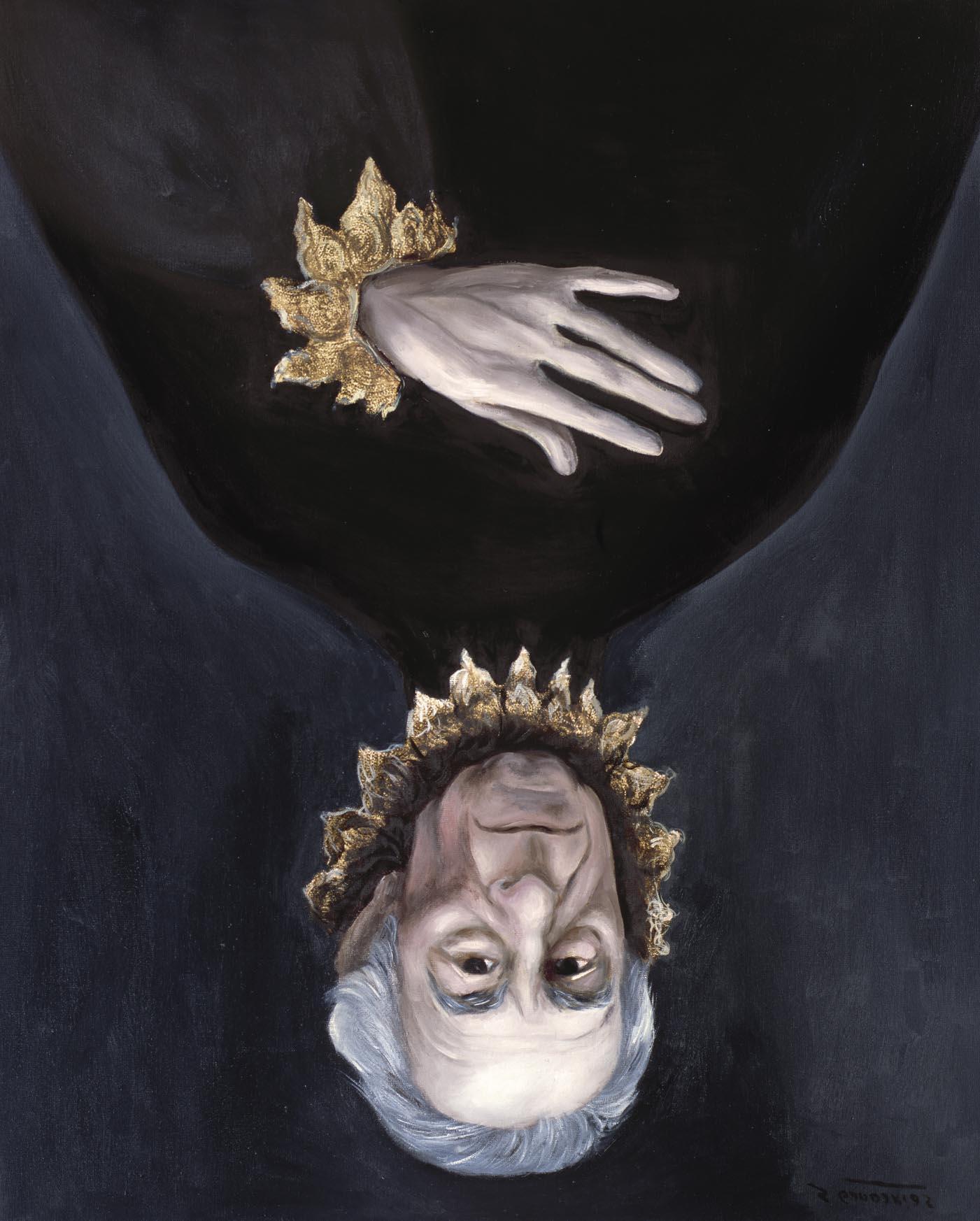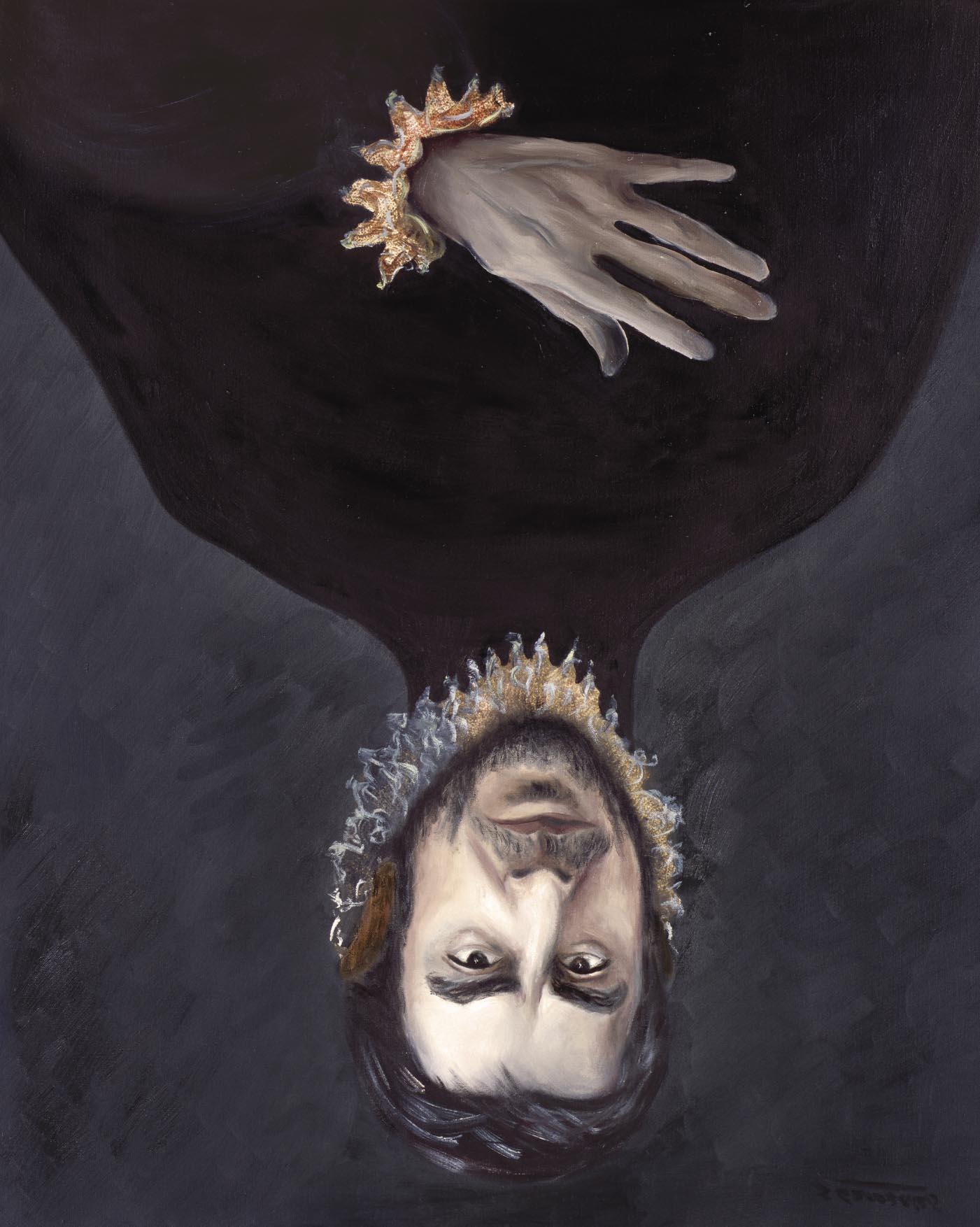Sofía Gandarias
59
Guillermo Solana The painter of the shadows
La pintora de las sombras
When I wrote the modern part of the Collection of the Senado, I had to document on the work of Sofía Gandarias. I looked for her catalogues and I was fascinated by this painter that in a clear monographic way dedicated her work to the world of literature, a way not always accepted in the twentieth Century. The world of visual arts spent most of the century trying to get away of the shadow projected by literature, under which it had to live so many centuries. Painting has been nourished by great mythological or religious narrative. The modern novel and the great formalist critics of the middle of the twentieth Century considered literature as a Taboo.The fact that a painter in such an explicit and sassy way made of the literary homage, the genre that the French call “le tombeau”, the homage to a great artist, to a writer, to a musician of the past, something like what we are doing now in a more modest way with her, already fascinated me.
Cuando tuve que escribir la parte moderna de la colección del Senado me documenté sobre la obra de Sofía Gandarias. Busqué sus catálogos y me fascinó aquella pintora que, bastante monográficamente, se dedicaba al mundo de la literatura, algo que en el siglo XX no siempre había sido bien aceptado. El mundo de las artes visuales se pasó buena parte del siglo tratando de zafarse de la sombra proyectada por la literatura, bajo la cual vivió la pintura tantos siglos. La pintura se ha nutrido de los grandes relatos mitológicos, religiosos. La novela moderna y los grandes críticos formalistas de mediados del siglo XX consideraban la literatura como un tabú. El hecho de que una pintora de una manera tan explícita y tan descarada, hiciera del homenaje literario, ese género que los franceses llaman “le tombeau”, el homenaje a un gran artista, a un escritor, a un músico del pasado, es algo como lo que ahora modestamente estamos haciendo con ella, me fascinó ya.
But what surprised me most was to meet her. How could a woman so beautiful, so refined that one would presume to see her as a host in a fantastic social event, have such a tragic, somber temper, in any case dramatic, with writers with such a gloomy dimension, tormented writers, writers of the absurd?. Immediately, I realized that her life had not been a path paved with roses. Particularly, the birth of his son had been very difficult, very hard; she had known the suffering in her own flesh. I knew her conscience, this conscience in the flesh of the Humanity. This explains why Vallejo was one of her favorite poets. Last time I met her in a
Pero lo que me sorprendió muchísimo fue conocerla. ¿Cómo podía aquella mujer tan bellísima, tan exquisita, que uno esperaría verla como anfitriona de una fantástica recepción social, tener un talante tan a ratos trágico, sombrío en todo caso, dramático, casi siempre sobre escritores con un lado muy tenebroso, escritores atormentados, escritores del absurdo?. En seguida vi que su vida no había sido un camino de rosas, que particularmente el alumbramiento de su hijo había sido muy difícil, muy duro, que había conocido el sufrimiento muy en carne propia. Conocí su conciencia, esa conciencia en carne viva de la humanidad, que
Guillermo Solana is Artistic Director of the Thyssen-Bornemisza Museum (Madrid, Spain), and Professor of Aesthetics and Art Theory at the Universidad Autónoma de Madrid.
Guillermo Solana es Director Artístico del Museo ThyssenBornemisza, y Profesor Titular de Estética y Teoría de las Artes en la Universidad Autónoma de Madrid.
#14
El Caballero José Luis Gómez Óleo sobre lienzo / 100 x 81 cm. / 2014





























